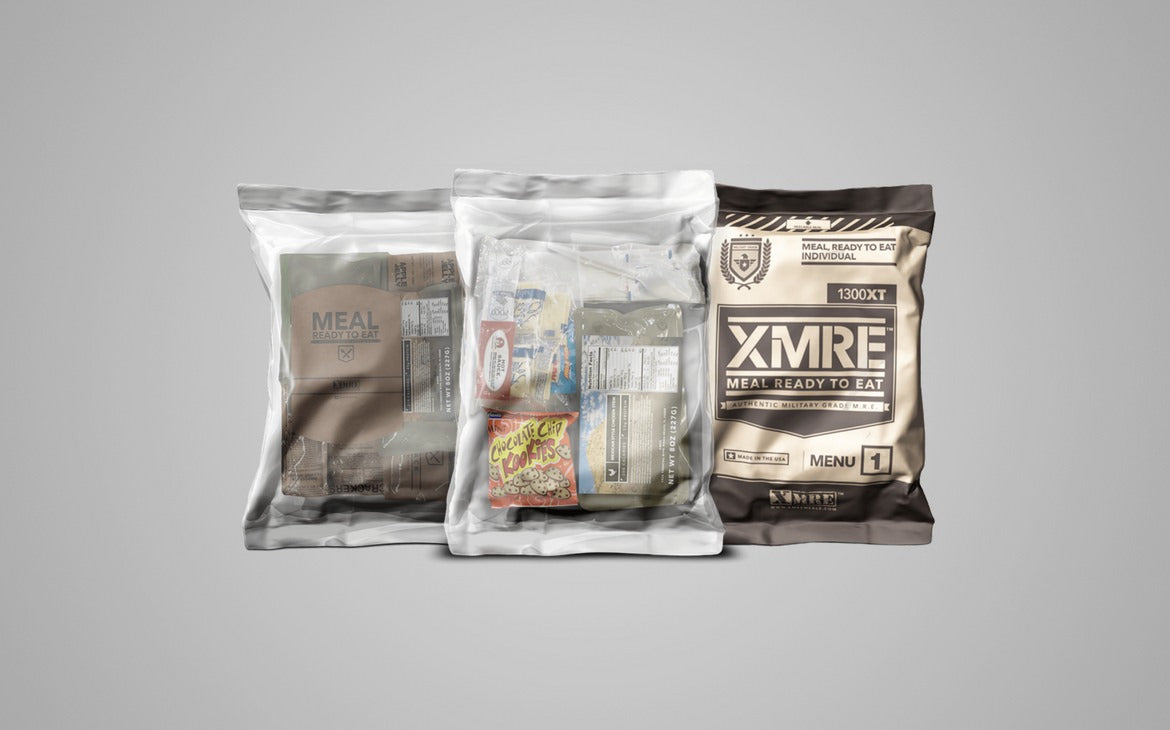In today’s United States military, the term MRE is well know. MRE, which stands for Meal, Ready-to-Eat, refers to a packed ration that is ideal for nutrition on the go. Since their introduction in 1981, MREs have been continually improved to provide optimal nutrition to soldiers while also being as easy as possible to carry and use. For servicemen on the go, MREs provide a convenient way for soldiers to stay fed and thus continue operating at peak performance.
The original version of the MRE was developed in response to the difficulty of feeding troops with canned food. Canned wet rations were heavy and unwieldy, making it difficult and time consuming for soldiers to make long treks on foot, away from vehicles that could carry the heavy rations. MREs were designed to be lightweight, and to allow a greater diversity of food options for soldiers. With canned rations, soldiers would often not eat the full portion, which would limit the effectiveness of the nutritional value.
The original MRE was little more than a brown plastic pouch containing a dehydrated meal. While a significant step up in usability from canned food, this was still a less than appealing option for soldiers. Since its introduction, the MRE pouch has undergone several design upgrades to become more user-friendly.
One of the largest engineering upgrades of the MRE system was the introduction of a flameless heater in 1990. Often, troops would find that building a fire or finding another method to heat their food was dangerous or impossible. Consuming cold dehydrated food was extremely unpalatable, and the military found that under these conditions it was unlikely that soldiers would be able to choke down a full portion. To solve this problem, they introduced a water-activated flameless heating package that was capable of raising the temperature of the MRE by 100 degrees Fahrenheit over the course of 12 minutes. Each MRE comes with one of these heaters, which ensures that soldiers always have access to warm food.
MREs have also seen significant upgrades in the diversity of food options available. In 1996, there were 16 different options available, which rapidly expanded over the next few years. Four more options were introduced by 1997, and another four in 1998, bringing the total to today’s 24 entrées. These options include vegetarian meals and other dietary restrictions, allowing soldiers with a variety of eating habits to find food that fits their needs. There are also more than 150 side options available to customize an MRE to the user’s tastes.
The most recent MREs are designed with careful attention to nutritional information. The Institute of Medicine created a metric called the Dietary Reference Intake to help understand the relationship between people’s lifestyle, background, and age group, and the calories they consume. For men aged 18 to 30 who are highly physically active, which describes most active military servicemen, the Dietary Reference Intake shows a daily calorie requirement of about 4200 to stay the same weight.
This measurement was a problem for the military, because their calculations showed that soldiers in active combat only consumed an average of roughly 2400 calories a day. This 1800 calorie deficit, the military reasoned, would cause soldiers to not be at peak performance. There is ongoing research and engineering being done to encourage soldiers to meet their caloric needs when surviving on MRE rations. Research shows that, despite boosting the calories provided by MREs to cover the 4200 daily requirement, many soldiers still trade away or discard portions of their food. The main focus of MRE development today is to maintain the lightweight, convenient packaging while also making it more enticing for soldiers to finish the entire meal.
MRE design has a number of very strict requirements to ensure that the MREs can be used safely and effectively on the battlefield. The packaging of the meal is required to sustain parachute drops of at least 380 meters, or 1250 feet, and regular falls of 30 meters, or 100 feet, without suffering any damage. They must also be able to last for at least three years at 27 degrees Celsius, or 81 Fahrenheit, and stay usable after spending short periods anywhere from -51 Celsius (-60 Fahrenheit) to 49 Celsius (120 Fahrenheit). MREs provide roughly 1200 calories, and weighs between 18 and 26 ounces depending on the type of meal.
MRE bags are designed to be as usable, functional, and convenient as possible for soldiers on the move or in active combat. Since their introduction, they have been improved in multiple ways to provide optimal nutrition to combatants while also being lightweight and durable enough to be used on the go. The military is constantly looking for new ways to improve MRE design to be the best meal possible for its soldiers.

Leave a comment
This site is protected by hCaptcha and the hCaptcha Privacy Policy and Terms of Service apply.